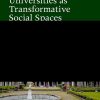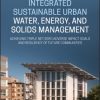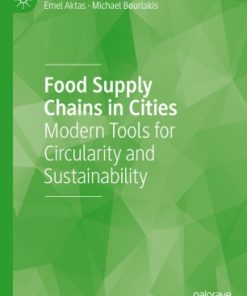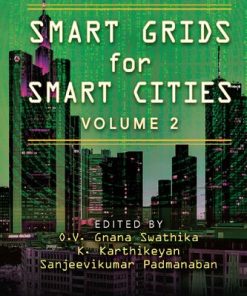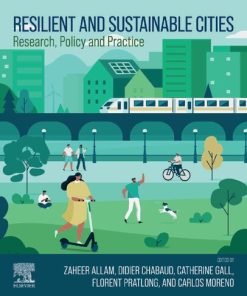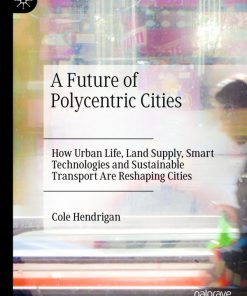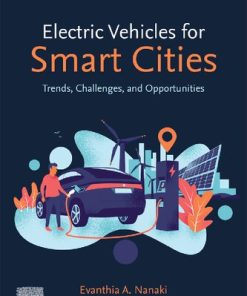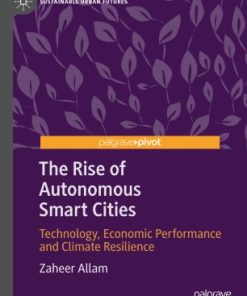(Ebook PDF) Smart, Resilient and Transition Cities Emerging Approaches and Tools for A Climate Sensitive Urban Development 1st Edition by Adriana Galderisi 0128114789 9780128114780 full chapters
$50.00 Original price was: $50.00.$25.00Current price is: $25.00.
Smart, Resilient and Transition Cities: Emerging Approaches and Tools for A Climate-Sensitive Urban Development 1st Edition by Adriana Galderisi – Ebook PDF Instant Download/DeliveryISBN: 0128114789, 9780128114780
Full download Smart, Resilient and Transition Cities: Emerging Approaches and Tools for A Climate-Sensitive Urban Development 1st Edition after payment.
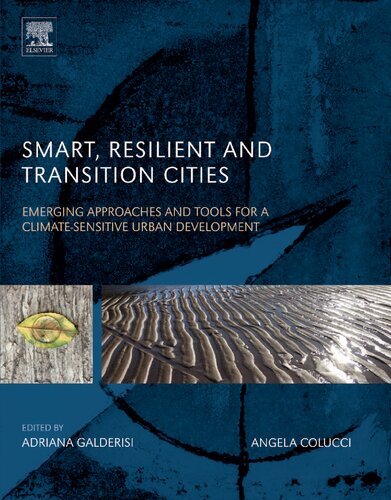
Product details:
ISBN-10 : 0128114789
ISBN-13 : 9780128114780
Author: Adriana Galderisi
Smart, Resilient and Transition Cities: Emerging Approaches and Tools for Climate-Sensitive Urban Development starts with a presentation of three widespread Urban Metaphors, which are gaining increasing attention from urban planners and decision-makers: Smart City, Resilient City and Transition Towns, being all of them focused on the need for enhancing cities’ capacities to cope with the multiple and heterogeneous challenges threatening contemporary cities and their future development and, above all, with climate issues.
Smart, Resilient and Transition Cities: Emerging Approaches and Tools for A Climate-Sensitive Urban Development 1st Table of contents:
I – METAPHORS TO ENHANCE CITIES’ CAPACITY TO COPE WITH CLIMATE CHANGE
1 – The Smart City Metaphor to Foster Collaborative and Adaptive Decision-Making Processes in the Fa
1.1 INTRODUCING THE SMART CITY METAPHOR
1.2 THE SMART CITY BETWEEN CONFLICTING APPROACHES AND GOALS: LOOKING FOR NEW DIRECTIONS
1.3 SMART CITY INITIATIVES: FROM SECTORAL TOWARD INTEGRATED PERSPECTIVES
1.4 THE GOVERNANCE OF THE SMART CITY: FROM TOP-DOWN INITIATIVES TOWARD COLLABORATIVE DECISION-MAKING
1.5 INFORMATION, KNOWLEDGE, AND LEARNING FOR ADAPTIVE CITIES
1.6 CONCLUDING REMARKS
References
Further Reading
2 – The Resilient City Metaphor to Enhance Cities’ Capabilities to Tackle Complexities and Uncertain
2.1 INTRODUCING THE RESILIENT CITY METAPHOR
2.2 TRACING THE EVOLUTION OF RESILIENCE ACROSS DISCIPLINARY BOUNDARIES: EMERGING PERSPECTIVES
2.3 THE RESILIENT CITY INITIATIVES: STRENGTHS AND WEAKNESSES
2.4 CONCLUDING REMARKS
References
3 – The Transition Approach in Urban Innovations: Local Responses to Climate Change
3.1 SOCIETAL TRANSITION MODELS
3.1.1 Governance of Transition Management
3.2 TRANSITION INITIATIVES
3.3 THE TRANSITION (TOWNS) NETWORK
3.4 TRANSITION INITIATIVES: INNOVATIONS FOR FACING URBAN CLIMATE CHANGE ISSUES
3.4.1 Complex Systems Approach
3.4.2 Process as Focus of Transition Metaphor
3.4.3 Governance of Transition Processes
3.4.4 Institutional-Led and Community-Led Processes
3.4.5 Nonlinear Transition Processes and Seeds of Innovation
3.4.6 Local-Global Dimensions
3.4.7 Transition Tools: Coproduction, Adaptive Learning, and Codesign Tools
3.4.8 The Networking Level Develops Tools to Support the Success of Single-Transition Initiatives
3.4.9 Transition Tools: Monitoring
References
Further Reading
4 – Smart, Resilient, and Transition Cities: Commonalities, Peculiarities and Hints for Future Appro
4.1 THREE URBAN METAPHORS
4.2 COMMONALITIES AND PECULIARITIES OF THE THREE METAPHORS IN SCIENTIFIC LITERATURE
4.3 COMMONALITIES AND PECULIARITIES OF THE THREE METAPHORS IN CURRENT PRACTICES
4.4 CONCLUDING REMARKS
References
II – LARGE-SCALE STRATEGIES TO COUNTERBALANCE CLIMATE CHANGE
5 – European Strategies and Initiatives to Tackle Climate Change: Toward an Integrated Approach
5.1 EUROPE AND CLIMATE CHANGE ISSUES
5.2 EUROPEAN STRATEGIES TO COUNTERBALANCE CLIMATE CHANGE
5.2.1 European Mitigation Goals and Strategies
5.2.2 European Adaptation Strategies
5.2.3 Europe Toward an Integrated Climate Strategy
5.3 CONCLUDING REMARKS: WHICH FUTURE FOR CLIMATE POLICIES IN EUROPE?
References
6 – The American Approach to Climate Change: A General Overview and a Focus on Northern and Arctic R
6.1 STRATEGIES AND INITIATIVES IN THE FACE OF CLIMATE CHANGE: THE AMERICAN APPROACH
6.2 FOCUSING ON NORTHERN AND ARCTIC REGIONS
References
Further Reading
7 – Climate Change Mitigation and Adaptation Initiatives in Africa: The Case of the Climate and Deve
7.1 INTRODUCTION
7.2 BACKGROUND: RESILIENCE AS A CONVENING CONCEPT FOR INTEGRATING CLIMATE CHANGE MITIGATION AND ADAP
7.3 CASE STUDY: THE CLIMATE AND DEVELOPMENT KNOWLEDGE NETWORK “WORKING WITH INFORMALITY TO BUILD R
7.4 LESSONS LEARNED
7.5 CONCLUSION
References
8 – Addressing Climate Change in China: Policies and Governance
8.1 INTRODUCTION: CLIMATE CHANGE AND ENERGY IN CHINA
8.2 CLIMATE GOVERNANCE
8.3 STRATEGIES AND INITIATIVES IN CLIMATE CHANGE
8.4 MITIGATION AND ADAPTATION IN CITIES
8.5 CONCLUDING REMARKS
References
9 – Mitigation and Adaptation Strategies in the Face of Climate Change: The Australian Approach
9.1 CLIMATE CHANGE ISSUES IN AUSTRALIA
9.2 SIGNIFICANT MITIGATION AND ADAPTATION STRATEGIES BY THE AUSTRALIAN FEDERAL GOVERNMENT
9.3 BEYOND MITIGATION AND ADAPTATION: CLIMATE CHANGE AS A CONTESTED POLITICAL ISSUE
9.4 CONCLUSIONS: WHICH APPROACH FOR MITIGATION AND ADAPTATION IN AUSTRALIA?
Acknowledgments
References
III – CITIES DEALING WITH CLIMATE CHANGE: INSTITUTIONAL PRACTICES
10 – European Cities Addressing Climate Change
10.1 THE PIVOTAL ROLE OF CITIES IN COUNTERBALANCING CLIMATE CHANGE
10.2 EUROPEAN CITIES ADDRESSING MITIGATION ISSUES: THE COVENANT OF MAYORS INITIATIVE
10.3 EUROPEAN CITIES ADDRESSING ADAPTATION ISSUES: THE MAYORS ADAPT INITIATIVE
10.4 EUROPEAN CITIES EMBRACING AN INTEGRATED CLIMATE STRATEGY: THE NEW COVENANT OF MAYORS FOR CLIMAT
10.5 CONCLUDING REMARKS
References
11 – Adaptation and Spatial Planning Responses to Climate Change Impacts in the United Kingdom: The
11.1 CLIMATE CHANGE IMPACTS IN THE UNITED KINGDOM
11.1.1 Portsmouth
11.1.2 Climate Change Impacts on Portsmouth
11.2 PORTSMOUTH’S CLIMATE CHANGE ADAPTATION AND PLANNING RESPONSES
11.3 TOWARD A RESILIENT PORTSMOUTH
11.3.1 Enhanced Cognitive Dimension of the Major Problems Affecting the City
11.3.2 Protected Coastline and Reduction of the Impacts of Flooding on Developments
11.3.3 Minimized Impacts of Any Emergency With a Rapid and Appropriate Response
11.3.4 Implemented Water Efficiency Measures
11.4 CONCLUSIONS
Disclaimer
References
12 – Land-Use Planning and Climate Change Impacts on Coastal Urban Regions: The Cases of Rostock and
12.1 CLIMATE CHANGE IMPACTS AND LAND-USE PLANNING IN URBAN REGIONS
12.1.1 Rostock Case
12.1.2 Riga Case
12.2 CHALLENGES, OPPORTUNITIES, AND BARRIERS FOR RESILIENT LAND-USE PLANNING
12.2.1 Land-Use Planning Challenged by Specific Characteristics of Climate Change, Its Effects and P
12.2.2 Barriers and Opportunities Offered by Land-Use Planning to Address These Challenges
12.2.3 Barriers and Opportunities Related to, But Outside of, Land-Use Planning
12.3 CONCLUSIONS AND OUTLOOK
Acknowledgments
References
13 – Importance of Multisector Collaboration in Dealing With Climate Change Adaptation: The Case of
13.1 THE BELGRADE LOCAL CONTEXT
13.2 CURRENT INITIATIVES/PRACTICES
13.2.1 Environmental Atlas of Belgrade (1998–2002)
13.2.2 Green Regulation of Belgrade (2002–07)
13.2.3 Regional Spatial Plan of Belgrade (2003, 2011)
13.2.4 City of Belgrade Development Strategy (2007–11)
13.2.5 Emergency Management Unit (2012–16)
13.2.6 Inventory of Landslides (2010–16)
13.2.7 Climate Change Adaptation Plan and Vulnerability Assessment (2015)
13.2.8 Belgrade as Part of the 100 Resilient Cities (100RC) Network (2015)
13.2.9 Establishment of the Division of Climate Change, Energy Efficiency, and Renewable Energy (201
13.2.10 Protection and Rescue Plan and Risk and Vulnerability Assessment
13.2.11 City of Belgrade General Urban Plan (2016)
13.2.12 Operationalization of Climate Change Adaptation Measures (2016)
13.3 CRITICAL ANALYSIS OF CURRENT INITIATIVES/PRACTICES
13.3.1 Transition and the Resilient City
13.3.2 Level of Integration Between Mitigation and Adaptation Initiatives and Plans
13.3.3 Mainstreaming of Mitigation and Adaptation Practices into Urban Planning Processes
13.3.4 Existing/Potential Barriers or Criticalities that Might Be Obstacles to Achievement of the Ex
References
Further Reading
14 – Genoa and Climate Change: Mitigation and Adaptation Policies
14.1 THE GENOA CASE STUDY: CLIMATIC AND GEOGRAPHICAL FEATURES
14.1.1 Climate and Climate Change in Genoa
14.2 DESCRIPTION OF CURRENT CLIMATE INITIATIVES IN GENOA
14.3 CONCLUSIONS AND CRITICAL ANALYSIS
References
Further Reading
15 – The Evolution of Flooding Resilience: The Case of Barcelona
15.1 INTRODUCTION: FLOODING RESILIENCE AND BARCELONA
15.2 FIRST PATTERNS OF FLOODING RESILIENCE: LINKS BETWEEN DRAINAGE SYSTEMS DESIGN AND URBAN PLANS
15.3 BARCELONA OLYMPIC MODEL FRAMING THE CONTEMPORARY CHALLENGES IN FLOODING RESILIENCE
15.4 SUSTAINABLE DRAINAGE: ENHANCING DECENTRALIZATION FOR THE FUTURE OF URBAN FLOODING RESILIENCE
15.5 CONCLUSIONS
References
16 – Athens Facing Climate Change: How Low Perceptions and the Economic Crisis Cancel Institutional
16.1 THE PROFILE OF METROPOLITAN ATHENS: CURRENT VULNERABILITIES, EXPOSURE TO CLIMATE CHANGE AND RES
16.1.1 Demographic, Social, Economic, and Governance Features of the Metropolitan Area
16.1.2 The Building Stock, Urban Form, and Green Infrastructure in the Municipality of Athens: Expos
16.1.3 Climate Change Trends in Athens Metropolitan Area—Catalysts and Impacts
16.2 CURRENT RESPONSES TO CLIMATE CHANGE: POLICIES, INITIATIVES, PRACTICES
16.3 CRITICAL ANALYSIS OF CURRENT POLICIES, INITIATIVES, AND PRACTICES
References
17 – Sustainability of Climate Policy at Local Level: The Case of Gaziantep City
17.1 INTRODUCTION
17.2 THE CLIMATE POLICY IN TURKEY
17.3 THE CASE STUDY OF GAZIANTEP
17.3.1 A Brief Introduction About the City
17.3.2 Climate Governance in Gaziantep
17.3.3 Specific Climate Change Actions in Gaziantep
17.4 CONCLUDING DISCUSSION
References
18 – Toward Integration: Managing the Divergence Between National Climate Change Interventions and U
18.1 BACKGROUND
18.2 CLIMATE CHANGE ISSUES
18.2.1 Climate Change Issues in National Development Policy Frameworks3
18.2.2 Climate Change and the Guidelines for the Preparation of Medium-Term Development Plans
18.2.3 Urban Climate Change Interventions in National Development Policy Frameworks
18.3 CLIMATE CHANGE AND URBAN PLANNING IN THE KUMASI METROPOLIS
18.3.1 Climate Change and Urban Development Plans of the Kumasi Metropolis
18.3.2 Climate Change Interventions in Urban Development Plans
18.4 MANAGING THE NATIONAL AND URBAN PLANNING DIVERGENCE
References
19 – Spatial Planning for Climate Adaptation and Flood Risk: Development of the Sponge City Program
19.1 INTRODUCTION
19.2 THE PROFILE OF GUANGZHOU: RAPID URBANIZATION AND EXPOSURE TO CLIMATE CHANGE
19.2.1 Demographic, Social, Economic, and Political Features in the Trend of Rapid Urbanization
19.2.2 Climate Change and Flood Vulnerability in Guangzhou
19.3 SPONGE CITY: SHIFTING THE SPATIAL PLANNING FRAME
19.3.1 Previous Flood Concerns: A Section in the Latest Spatial Planning Documents With Limited Atte
19.3.2 New Understanding of Flood Risk as a Spatial Issue Related to Climate Change
19.3.3 Toward Mainstreaming and Multifunctional Interventions
19.3.4 New Regulatory Tools to Regulate the Competition for Land Between High-density Development an
19.3.5 A Rise of Status of Spatial Planning in a New Flood Governance
19.4 CRITICAL ANALYSIS OF THE MUNICIPAL INTERPRETATION OF THE SPONGE CITY PROGRAM IN GUANGZHOU
19.4.1 Potential Criticality in the Recognition of the Coastal Flooding and Socioeconomic Trends
19.4.2 The Mismatch Between Dynamic Changes in Flood Risk and a Static Regulatory Index
19.4.3 Potential Challenges in the Horizontal Collaborative Implementation Around the Corner
19.4.4 Potential Conflicts Between Limited Subsidy and Long-term Investment in the Top-down Affairs
19.5 CONCLUSIONS
References
20 – Climate Change and Australian Local Governments: Adaptation Between Strategic Planning and Chal
20.1 INTRODUCTION
20.2 CLIMATE CHANGE ADAPTATION BETWEEN LAND USE AND DEVELOPMENT
20.3 CLIMATE CHANGE ADAPTATION AND THE TARGET ON LOCAL COMMUNITIES
20.4 CHALLENGES FOR CLIMATE CHANGE ADAPTATION
20.5 CONCLUSION
Acknowledgments
References
IV – CITIES DEALING WITH CLIMATE CHANGE: TRANSITION INITIATIVES
21 – Transition Initiatives: Three Exploration Paths
21.1 TRANSITION INITIATIVES: THREE EXPLORATION PATHS
21.2 TRANSITION NETWORK
21.2.1 Transition Town Network Evolution
21.2.2 Transition Town Initiatives: Geographies and Distribution
21.3 TRANSITION INITIATIVES ACTING ON URBAN COMMONS AND PUBLIC LIFE
21.4 RESILIENCE PRACTICES OBSERVATORY
21.5 CONCLUDING REMARKS
References
22 – Transition Towns Network in the United Kingdom: The Case of Totnes
22.1 TOTNES TRANSITION TOWN
References
23 – Transition Towns Network in Italy: The Case of Monteveglio
23.1 MONTEVEGLIO TRANSITION TOWN
23.2 CRITICAL ANALYSIS OF THE INITIATIVE
References
24 – Model for Integrated Urban Disaster Risk Management at the Local Level: Bottom-Up Initiatives o
24.1 INTRODUCTION
24.1.1 Background Characteristics of the Municipality of Obrenovac
24.1.2 State of Resilience in the Municipality of Obrenovac
24.2 INITIATIVE BY THE INTEGRATED URBANISM MASTER’S PROGRAM TO BUILD UDRM CAPACITY AT THE LOCAL AUTH
24.2.1 Role of the Integrated Urbanism Program in Building Professional Capacity
24.2.2 Overview of the Academic Initiative
24.2.3 Achievements
24.3 CRITICAL ANALYSIS OF THE INITIATIVE
References
25 – Enhancing Community Resilience in Barcelona: Addressing Climate Change and Social Justice Throu
25.1 ADAPTING AND MITIGATING CLIMATE CHANGE FROM BELOW
25.1.1 Exploring Community-Led Initiatives in Barcelona: From Energy to Housing and Mobility
25.1.2 Integrated Approaches from Cocreation to Squatting
25.2 FROM COMMUNITY-LED TO COMANAGEMENT: THE PLA BUITS EXPERIENCE
25.3 DISCUSSION: PROMISES FROM A NEW GOVERNANCE MODEL DEALING WITH COMANAGEMENT?
Acknowledgment
References
26 – Barriers to Societal Response and a Strategic Action Plan Toward Climate Change Adaptation and
26.1 INTRODUCTION
26.2 PHYSICAL DIMENSION: INCREASING EXPOSURE AND SYSTEMIC VULNERABILITY
26.3 SOCIETAL CONCERNS: STAKEHOLDER COORDINATION AND COLLABORATION
26.4 DISCUSSION AND CONCLUSION
References
Further Reading
27 – Victims or Survivors: Resilience From the Slum Dwellers’ Perspective
27.1 PEDDA JALARIPETA (LARGE FISHING VILLAGE)
27.1.1 Pedda Jalaripeta Social, Cultural, and Economic Identity
27.2 DATA SOURCES AND COLLECTION
27.3 SURVIVING DISASTERS THROUGH COLLABORATION: FIRE AND GENTRIFICATION/EVICTION
27.3.1 Fire
27.3.2 Gentrification/Eviction
27.4 COLLABORATING, EMPOWERING, AND EDUCATING
References
28 – Bottom-Up Initiatives for Climate Change Mitigation: Transition Town in Newcastle
28.1 INTRODUCTION
28.2 TRANSITION AND TRANSITION TOWN
28.3 TRANSITION NEWCASTLE
28.3.1 Newcastle Upcycle
28.3.2 Transition Street
28.3.3 Nourishing Newcastle Urban Tucker Stall
28.4 TRANSITION AND CLIMATE CHANGE MITIGATION: CHALLENGES AND OPPORTUNITIES FOR TRANSITION NEWCASTLE
Acknowledgments
References
V – CROSS-CUTTING ISSUES: HINTS FOR INTEGRATED PERSPECTIVES
29 – Integrated Knowledge in Climate Change Adaptation and Risk Mitigation to Support Planning for R
29.1 CITIES AS COMPLEX ENTITIES
29.2 DEALING WITH HAZARDS AND RISK IN CONTEMPORARY CITIES: A MULTIDISCIPLINARY CHALLENGE
29.3 RESILIENCE: WILL THIS CONCEPT PROVIDE THE NECESSARY LINK BETWEEN DISASTER SCIENTISTS, CLIMATE C
29.4 KNOWLEDGE SUPPORTING BETTER AND MORE ADAPTIVE RECOVERY AND RECONSTRUCTION
29.5 AN EXAMPLE OF THE POSSIBLE APPLICATION OF A MULTIRISK, ATTENTIVE-TO-CLIMATE CHANGE RECOVERY AFT
References
Further Reading
30 – Boundaries, Overlaps and Conflicts Between Disaster Risk Reduction and Adaptation to Climate Ch
30.1 CLIMATE CHANGE AND DISASTER RISK: ARE THEY RELATED?
30.2 DRR AND ADAPTATION TO CC: CONVERGENCES AND MISMATCHES IN TERMINOLOGY, PROCESSES, AND TOOLS
30.3 THE NEED FOR AND PROSPECTS OF INTEGRATION OF DRR AND ADAPTATION TO CC
References
Further Reading
31 – The Contribution of the Economic Thinking to Innovate Disaster Risk Reduction Policies and Acti
31.1 URBAN SYSTEMS AND DISASTERS FROM AN ECONOMIC PERSPECTIVE
31.2 COPING WITH DISASTER RISK: HOW ECONOMIC UNDERSTANDING MIGHT ENHANCE THE DRR ACTION
31.3 CBA AS AN ECONOMIC-BASED TOOL TO ENHANCE DECISION-MAKING PROCESSES IN DRR ACTION AND TERRITORIA
31.4 CONCLUDING REMARKS
References
Further Reading
32 – Flood Resilient Districts: Integrating Expert and Community Knowledge in Genoa
32.1 URBAN CONTEXT, ENVIRONMENTAL CHARACTERISTICS AND CITIZENS’ ENGAGEMENT
32.2 MAIN METEOROLOGICAL PHENOMENA AND THEIR IMPACTS
32.3 MAIN FRAGILITIES
32.4 THE SUGGESTED LOCAL STRATEGY OF DISASTER RISK REDUCTION AND PLANNING OF ACTIONS
32.4.1 Hydraulic Analysis
32.4.2 Economic Evaluation
32.4.3 Evaluation of the Activation Time
32.4.4 Evaluation of Effectiveness
32.5 CONCLUSIONS AND CRITICAL ANALYSIS
References
Further Reading
VI – TOWARDS A CLIMATE-SENSITIVE URBAN DEVELOPMENT
33 – Drawing Lessons From Experience1
33.1 LARGE-SCALE STRATEGIES IN THE FACE OF CLIMATE CHANGE: TRAJECTORIES AND BARRIERS
33.1.1 Heterogeneous Political Systems Dealing With Climate Issues
33.1.2 Large-Scale Climate Strategies and Urban Metaphors
33.1.3 The Difficult Paths Toward Climate Strategies
33.1.4 The Pivotal Role of Cities
33.2 CLIMATE POLICIES AT LOCAL LEVEL: DRAWING UPON CITIES’ EXPERIENCES
33.2.1 Case Studies: General Overview
33.2.2 Case Studies: Conceptual Framings
33.2.3 Climate Urban Policies Between Persistence, Adaptability, Transformability, and Learning Capa
33.2.4 Climate Urban Policies Between Sectoral and Integrated Approaches
33.2.5 Governance Models: Cues of Innovation and Signs of Weaknesses
33.2.6 Barriers to Effective Climate Urban Policies
33.3 TRANSITION INITIATIVES IN THE FACE OF CLIMATE CHANGE: HINTS FROM CURRENT PRACTICES
33.3.1 Transition Initiatives: General Overview and (Local) Scale Focus
33.3.2 Transition Initiatives: Conceptual Framings
33.3.3 Persistence, Adaptability, and Transformability in Transition Initiatives
33.3.4 Governance Models in Transition Initiatives: Hints for Innovation
33.3.5 Transition Tools for Climate Urban Actions
33.3.6 Barriers and Opportunities in Transition Initiatives
33.4 FINAL REMARKS
References
34 – Future Perspectives: Key Principles for a Climate Sensitive Urban Development1
34.1 INTRODUCTION
34.2 THE KEY PRINCIPLES FOR CLIMATE-SENSITIVE URBAN DEVELOPMENT
34.2.1 Integration
34.2.2 Mainstreaming
34.2.3 Transformative
34.2.4 Capacity Building
34.2.5 Governance
People also search for Smart, Resilient and Transition Cities: Emerging Approaches and Tools for A Climate-Sensitive Urban Development 1st:
smart cities and sustainability
cities resilient to climate change
smart cities trends
smart cities alliance
smart cities and climate change
Tags:
Smart,Resilient,Transition Cities,Emerging Approaches,Tools,Climate Sensitive,Urban Development,Adriana Galderisi
You may also like…
Politics & Philosophy
Food Supply Chains in Cities: Modern Tools for Circularity and Sustainability 1st Edition
Uncategorized
Technique - Energy
Smart Grids for Smart Cities Volume 2 1st Edition O. V. Gnana Swathika
Computers - Security
Engineering - Civil & Structural Engineering
Jurisprudence & Law
Politics & Philosophy


